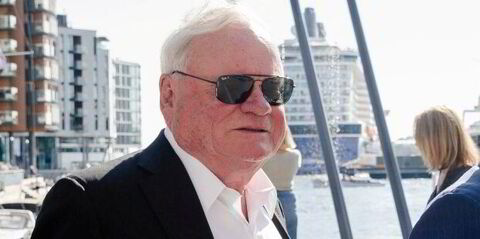The cost of buying modern secondhand vessels is maintaining a 13-year high compared to newbuilding prices, UK shipbroker Clarksons has calculated.
Clarksons Research analyst Trevor Crowe said this is a classic indicator of the health of the major markets and the appetite for existing tonnage.
“Secondhand versus newbuilding price ratios give an idea of how far investors are willing to go to get their hands on assets that are on the water today compared to investing in newbuild units,” he added.
“The current ratios make for interesting reading,” Crowe said.
Based on a 25-year lifespan, a 2018-built vessel depreciating on an even basis to zero would be worth around 80% of the newbuild price, or a little more allowing for some scrap value, he explained.
However, if investors feel that market conditions are strong enough, or the lead-time for newbuildings looks too long, they may be willing to pay a premium to get their hands on a secondhand vessel operating today, the analyst added.
A five-year-old aframax worth $62.5m stands at 95% of the newbuilding cost of $65m, Clarksons Research said.
“With tanker markets performing well — the strongest 12-month period for average earnings on record — assets on the water today are attractive whilst a relative shortage of near-term newbuild berth availability has pushed more tanker asset demand towards the secondhand market,” Crowe added.
The equivalent ratio for a VLCC stands at 82% and an MR product tanker at 92%.
The aframax ratio, which was 100% at the end of January, has hit the highest level since prior to the financial crisis in 2008.
And other sectors remain strong too.
Bulkers above average
For bulkers, the figure for a capesize is 88%, the highest since 2011.
Bulker markets have picked up from a weak start to the year, and there is firm demand for assets on the water, with the five-year-old capesize price rising this year to $54.5m, the highest since 2010, Crowe said.
This has been supported by strong market sentiment and limited availability, he added.
In the container ship sector, the ratio for a 1,700-teu feeder unit stands at 78%, well down from the more than 160% during the extraordinary market of 2021 and 2022.
But this is still only just below the 80% mark and in excess of anything seen between 2011 and February 2021, with some secondhand market interest despite the dramatic market correction, and perhaps supported for now by a lack of immediate charter market availability, the analyst argued.
The average of the three ratios on the graph stands at its highest point for 13 years, excluding the one-off recent boxship boom.
This has happened despite relatively firm newbuilding prices, Clarksons Research said.
However, tanker and bulker ratios are still well below previous highs in periods of very strong markets and acute interest in secondhand tonnage.
The capesize ratio hit more than 110% in 2010 and 160% before the 2008 crash, while the aframax ratio was 110% in late 2005.
“Nonetheless, today’s price ratios reflect current positive sentiment in many shipping sectors, though beyond the near-term, the outlook in containers looks weaker. These classic market indicators are still well worth checking up on,” Crowe concluded.





